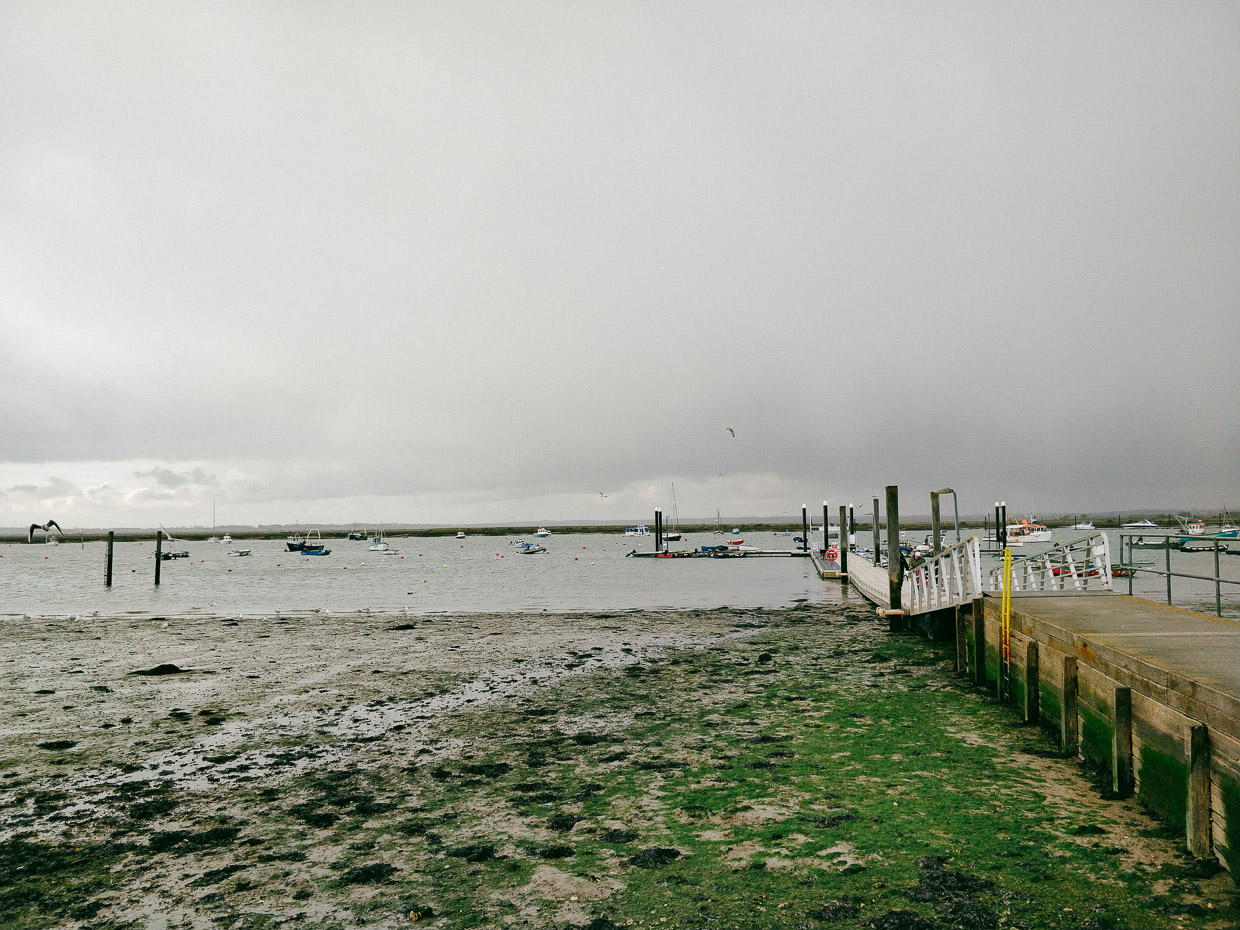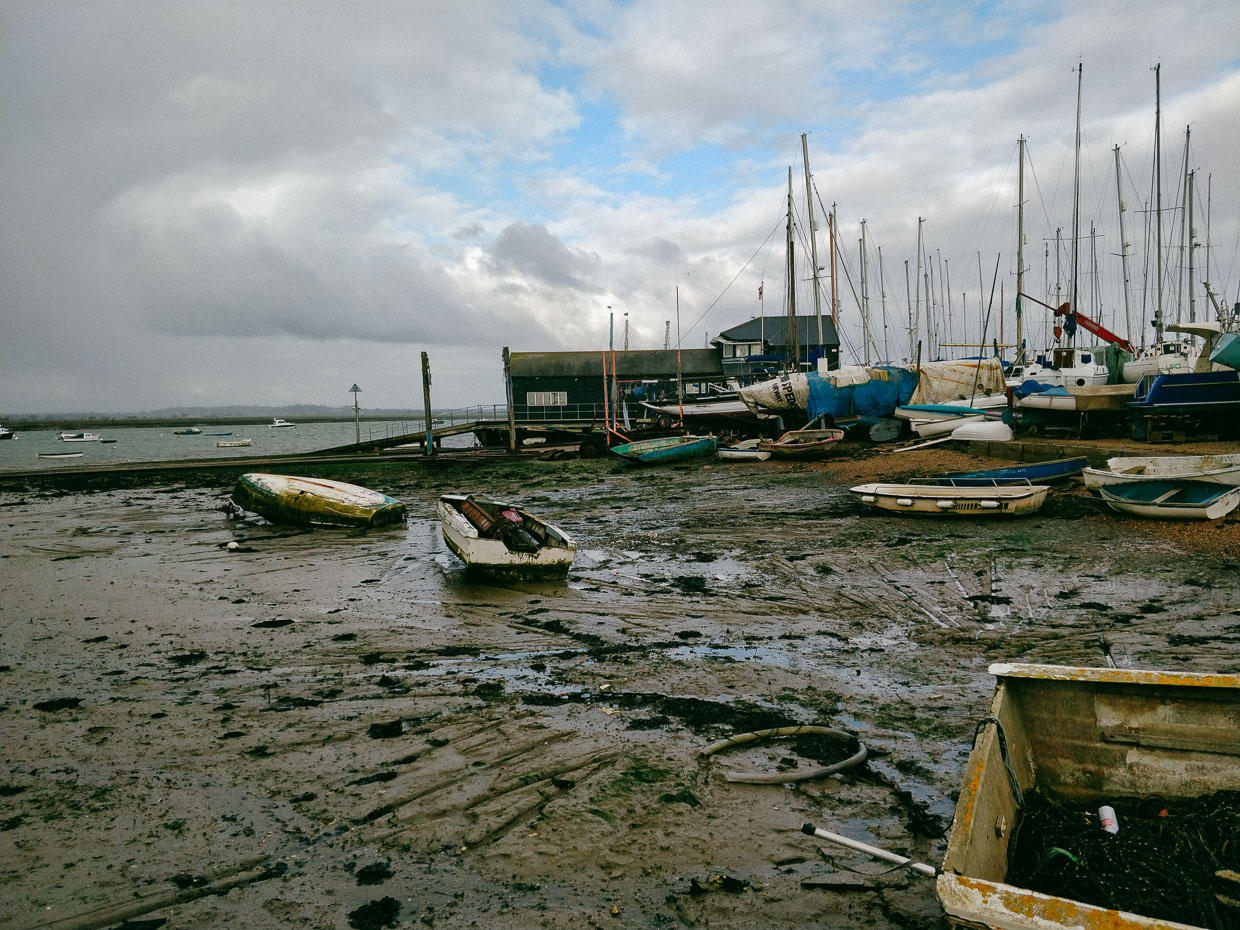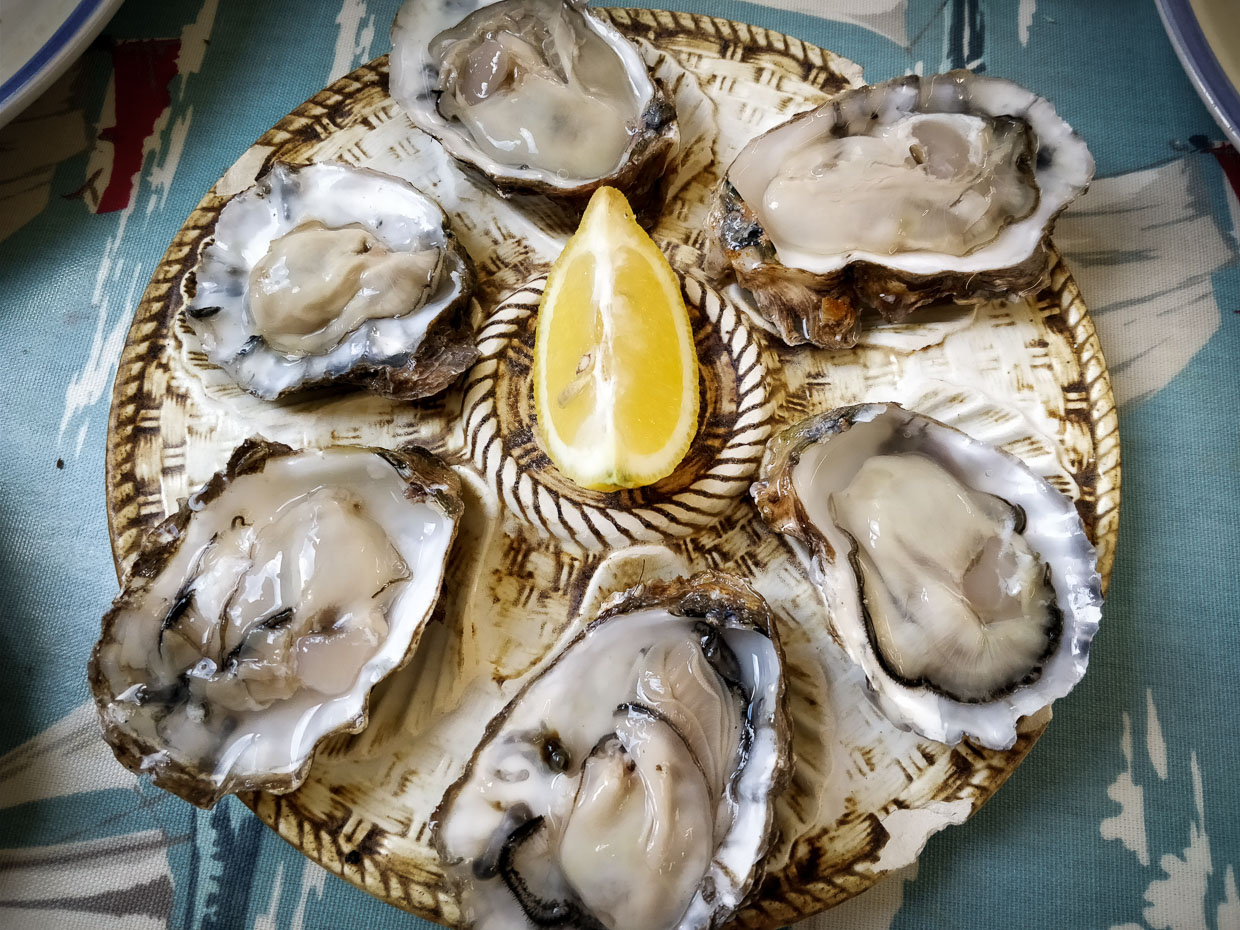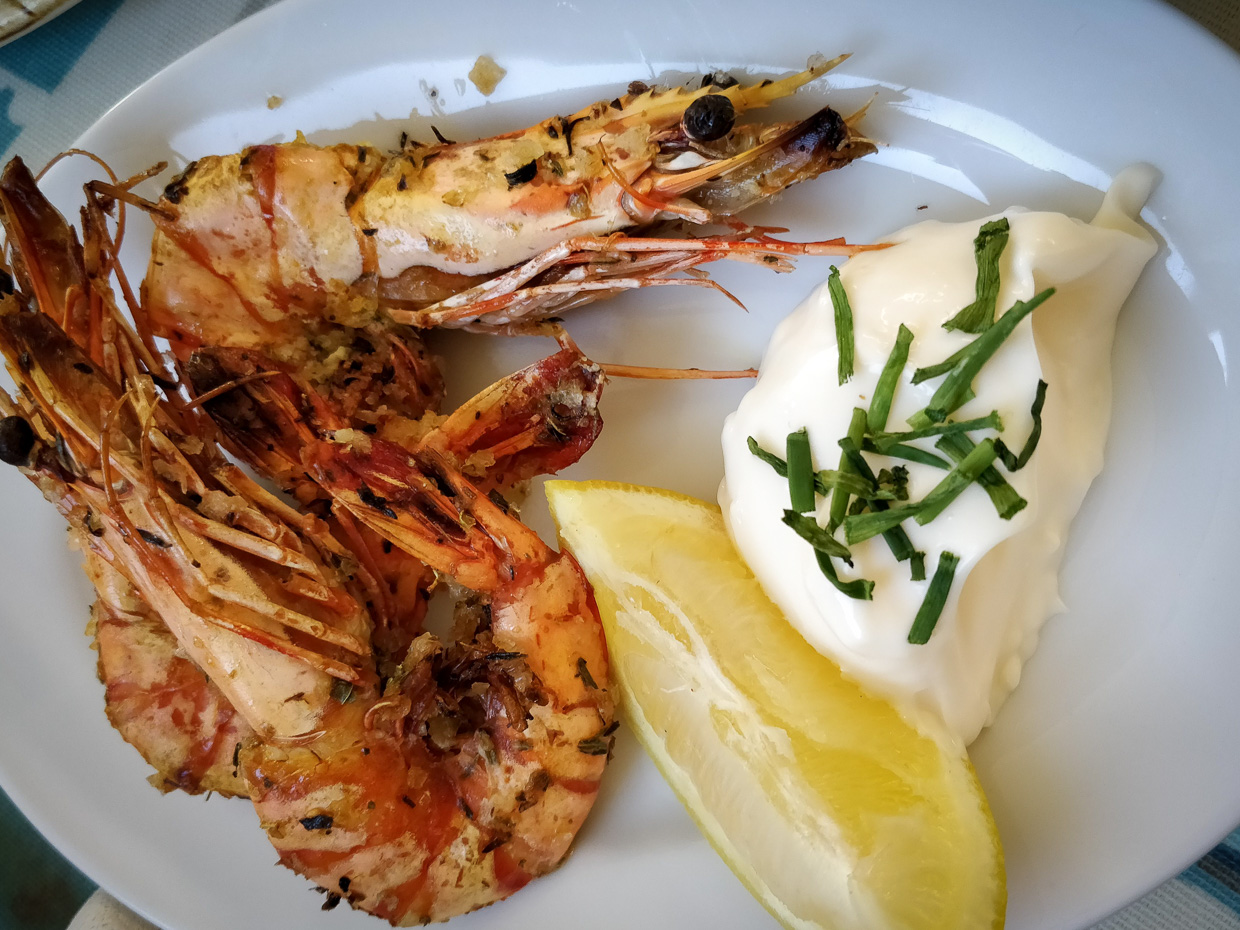The world is my oyster
I approach raw oysters with a mixture of excitment and trepidation. On one hand, raw oysters seem like a bourgeois delicacy I should appreciate. On the other hand, eating raw food sounds extremely risky. When I was invited to join a road trip to an oyster shop tuck away in Colchester, I was on the fence. But I never say no to a good company.
After about 2 hours drive from London, we arrived at a small town that looks like it has seen better days.
The ‘scenary’ The ‘scenary’ The ‘scenary’


The shop is moderate in size, with about 12 tables or so. For such a secluded area, it was fairly popular - it was completely full by around noon on a Saturday. The place allows you to bring your own booze and bread without any corkage fees, and they provide the seafood and cutleries.
They offer a selection of oysters at different prices. We tried No. 4 and Giga. Although the Giga looks bigger, we all agreed that the No. 4 is tastier. The No. 4 oyster The Giga oysters

We also ordered other seafood, because why not.
After a feast of 9 oysters each and miscellaneous seafood at the cost of under £23, we drove 2 hours back to London.
The aftermath
If only life consists of just happy endings…
2 days after this incident, a few of us fell ill. That evening, I realized we were most likely poisoned. It starts with fatigue, then bloatedness, and then finally the need to puke it all out. I always thought I had a stomach of a grub, but I was wrong. Thankfully, it came and went quickly. I felt completely weakened that evening, but after several trips to the toilet and a good night’s rest, I was good to go the next day.
Oyster preparation
Being the nerd I am, I read up on oyster poisoning after that incident. The most likely culprit is the virus called norovirus.
In order to reduce the risk of food poisoning, a huge amount of preparation is needed before a shop can be certified to serve these slimy crustation delight. There is even a grading system for it!
Shellfish from an A-grade site are fit for immediate human consumption. A grading of B requires 42 hours of depuration … C means the shellfish must be relaid in cleaner waters and then purged of impurities, and D means that all hope is lost and the beds must be closed until things improve.1
At least the oysters get a luxurious spa treatment before they are consumed by human acid:
Commercial oyster and shellfish harvesters also use a process called depuration. The shellfish are placed in tanks of clean recirculating seawater and are treated with UV irradiation. The oysters purge their contaminants over several days.2
Conclusion
I can’t decide which is the worse between food poisoning and getting a hangover. But I have definitely grown a phobia towards this so called “aphrodisiac”.

